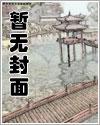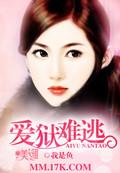
我的火影忍者
作者:卢碧更新时间:2017-04-26 12:52:31
博人传博人:我爸是火影,我爷爷是火影,我爷爷师父的老师是火影,我爸师父的老婆是火影,我爸师父的老婆她祖父和叔公都是火影,我爸的老师也是火影,我全家都是火影!鹿代:我们能不说火影吗?博人:六道仙人是我哥鹿代:...我们还是说说火影吧博人:我全家都是火影!鹿代:FA♂Q这是一个小时候不小心解开了封印,导致九尾当爸,水门当妈的鸣人的故事。企鹅群:223685218新书已经发布,书名:为美好的异世献上科学,欢迎品尝 我的火影忍者博人传 我的火影忍者卢碧 我的火影忍者博人传卢碧 我的火影忍者小说 卢碧95270
手机浏览器扫描二维码访问
无月此时就站在七代目火影岩的脑袋上看着木叶的风景,村子繁荣的景象净收眼底,似乎被风景『迷』『惑』了双眼,她的双脚也不自觉的向前走去,就这么顺着险峻的火影岩掉了下去。 “喂!!!” 博人吓得心脏差点从嘴里跳出来,他毫不犹豫的跟着水无月一起跳了下去,想把她救上来,然后他就看到了让人无法接受画面,水无月双脚牢牢的吸附在火影岩的脸上,带着一点褐『色』的瞳孔惊讶的看着自由落体下去的自己。 ‘啪’ 两个人同时伸出手,水无月的小手紧紧的拉住了博人的身体,经过一系列艰难的战斗之后才把他拉了上来。 “呼,你有什么想不开的?” 水无月趴在火影岩头上喘着气,末了还抬头关心的问道。 “我是去救你啊混蛋!话说你为什么会这...
- 第一章 稍微不一样的鸣人
- 要说的话
- 第二章 太子打工记
- 第三章 命运的相遇
- 第四章 不怕事的木叶扛把子
- 第五章 到底谁是正宫
- 第六章 太子与太子妃
- 第七章 蛇叔掌握核心科技
- 第八章 蛇叔是用来攻略的
- 第九章 笑着活下去
- 第十章 你敢动我老婆
- 第十一章 教练我要变wai强gua
- 第十一章 并不聪明的主角
- 第十三章 宇智波之哀
- 第十四章 把初吻搞丢了
- 第十五章 亲过之后你就是我的人了
- 第十六章 故事从这里开始
- 第十七章 少女你的思想很危险啊
- 第十八章 食我千年杀
- 第十九章 全员合格
- 第二十章 奥义夫妻螺旋丸
- 第二十一章 准备进入副本
- 第二十二章 经验值get
- 第二十三章 遭遇再不斩
- 第二十四章 力压再不斩
- 第二十五章 爬树
- 第二十六章 白是女女女孩子很重要说三遍
- 第二十七章 再不斩与白上
- 第二十八章 夫妻螺旋丸笑
- 第二十九章 再不斩与白下
- 第三十章 名为工具的羁绊
- 第三十一章 两千连弹
- 第三十二章 不花心就不会被柴刀为什么不明白
- 第三十三章 恕我直言村里的女孩子都没我漂亮
- 第三十四章 一与九的相会
- 第三十五章 色誘术乃宇宙最强
- 第三十六章 在座的各位都没有光环如何同台竞技
- 第三十七章 实力躺过
- 第三十八章 说好的新手村不出BOSS呢
- 第三十九章 护夫
- 第四十章 过关
- 第四十一章 没想到你是这样的卡卡西
- 第四十二章 白眼对白眼无法打破的隔阂
- 第四十三章 鸣雏大好
- 第四十四章 我已经报警了
- 第四十五章 蝌蚪不就是蛤蟆么
- 第四十六章 主角怎么能没有老爷爷
- 第四十七章 一言不合就搞事
- 第四十八章 佐助有什么好的跟我吧
- 第四十九章 无法反抗的命运
- 第五十章 螺旋丸对回天赢的是我
- 第五十二章 父与母
- 第五十三章 父母的奇迹
- 第五十四章 猛兽出笼
- 第五十五章 各自的悲伤
- 第五十六章 自来也的愤怒
- 第五十七章 姐妹落水你救谁
- 第五十八章 师徒会面
- 第五十九章 佐助你可安好
- 第六十章 变强的道路
- 第六十一章 火影的资格
- 第六十二章
- 第六十三章 又到了白色相簿的季节
- 第六十四章 解开封印
- 第六十五章 无法完成的约定
- 第六十六章 指导
- 第六十七章 要斩断的东西
- 第六十八章 追逐
- 第六十九章 最强的同盟
- 第七十章 最喜欢的朋友
- 第七十一章 无法追回的友情
- 第七十二章 哀伤的眼泪
- 第七十三章 离别前夕
- 第七十四章 冷冷的狗粮往嘴里胡乱的塞
- 第七十五章 定个小目标比如先当个风影
- 第七十六章 一起睡有什么关系吗
- 第七十七章 听说凑齐九颗龙珠能实现愿望
- 第七十八章 历史总是惊人的相似
- 第七十九章 初到雪之国
- 第八十章 矛盾的两人
- 第八十一章 被改变的人
- 上架感言
- 第八十二章 公主存在的意义就是被掳走求首订
- 第八十三章 我雪之国黑科技世界第一
- 第八十四章 一个人下本好累好辛苦
- 第八十五章 雪之春
- 第八十六章 从不坑弟子的好师父
- 第八十七章 对不起你是个好人
- 第八十八章 蛇叔只能帮你到这儿了
- 第八十九章 白的开导
- 第九十章 你的名字
- 第九十一章 男人之间的干架是不需要理由的
- 第九十二章 食物产生的羁绊
- 第九十三章 和平的日常
- 第九十四章 偶尔拯救个国家
- 第九十五章 风遁显威
- 第九十六章 众叛亲离
- 第九十七章 母亲遗留的宝物
- 第九十八章 终于完成的考验
- 第九十九章 土之国结束
腹黑傻王,绝爱王牌弃妃
镜月晓梦性别女职业胸外科军医,人称小心肝爱好美男古剑奇谭脑残粉性格彪悍,狠辣,笑里藏刀座右铭做个有品位的色女,做个有知识的文盲一朝穿越,她成了西凉国镜月世家的哑巴嫡女。大婚之日,被人联合坑害,爱人被妹妹夺走。而她镜月晓梦竟然配给了百里皇朝的皇长孙,偏生这皇长孙是一个傻子。好,傻子就傻子。她护他,爱他便是好好好!你敢嘲笑他?姐缝了你的嘴,看你还能够嘲笑人!哼哼哼!你敢欺他傻?姐送你一针,让你精神错乱,看谁比谁傻!来来来!你敢抽死他?姐卸了你的双臂,看你还能够抽人!传言他是九幽地狱的恶魔,丧心病狂,惨无人道,面容丑陋不堪。实则他俊美无涛,美到人神共愤,天地不容。传言他是人人可欺的傻王。智商犹若七岁孩童。实则他腹黑之极,暗下里更是拥有足以毁天灭地的势力。他宠她,纵她,爱她,让她成为九州大陆,人人羡慕嫉妒的女子。本文男主女主身心干净,大大的宠文,集狗血,搞笑,喋血,复仇,宫廷之斗,天下之争于一身。本文以暖色调为主。幽默风趣之中展现一代傻王弃妃的斗智斗勇,扑倒和反扑倒的爱情故事。欢迎亲们跳坑。...
那些年混过的日子
我混迹在学校的最底层,每天靠调戏美女同桌同桌取乐直到有一天,我救了同桌,得罪了学校的混混,从此我的人生开始了改变我开始了混,开始有了一群兄弟,开始有了女人,开始有了一段辉煌的岁月谁的热血不迸溅,谁的青春不张扬?那些年,我就混过了这样一段年少轻狂的日子!(保底两更,打赏50加一更,追书多300加2更,恶魔果实1...
我们一起去穿越
梦姿蝶和布奈黛伊米达,沿山谷飞行,寻找修炼的洞穴。突然身后伸出一双毫无血色的双手,原来是埃妮娜莎复活了。燡龙抬头看了看黑色的教堂仍在飞升。梅尔森口中念着咒语,忽然,从教堂中弥漫出黑霭如烟的毒气来,黑烟中有紫光,紫光中有毒蚕丝袭来。燡龙咬破手指,在空中画出一道火神符来封住毒蚕丝并摧毁整个黑教堂。燡龙念咒道火存天神!电灼光环,上者何命护身,下者驱鬼邪妖术,一切死活灭道由我定乾坤,急急如律令!。...
姐控的加速世界
nbpnbpnbpnbp加速世界同人作。nbpnbpnbpnbp结城翔太的加速之旅,姐控之旅调教黑长直之旅,登上七王宝座之旅。...
三国之群英技
新坑百花图鉴已上传,期待大家支持。...
槃凰
十四岁那年,阿奴在经历了一场大火后,摇身一变,她成了上京城中最尊贵的庶女。只是,这尊贵顶着别人的名分。而旁人也不甘心看着她尊贵,处处紧逼只为让她万劫不复。几番你死我活,阿奴从山间的野蔷薇,一步步蜕变为娇艳的玫瑰。她发誓,要用这满身的尖刺来保护自己,来帮着那个人,谋夺这天底下最尊贵的位置。却忘却了,提防自他的暗箭。既然要活就好好的活,既然要彼此争斗,那我必将全力相迎。皇天后土为证,今生今世你是我唯一的妻,也是我唯一爱的人!蓦然回首,这竟是阿奴记忆中最深刻的一句话她只想问,这些年一起走,你可曾有一丝的后悔高山之巅,你一人走,累不累...
寂静农场
这是一个关于在亚马逊丛林的普通种田故事。...
倾城前妻,老公情深100度
靳明臻是出了名的女人勿近,超强大脑,颜值爆表,还有令人咋舌的显赫家世,绝对是医学界的新晋男神。嫁给这...
爱狱难逃
千金大小姐,一夜之间,沦为一夜千金的小姐。 他忍辱负重,十年磨一剑,以世人瞩目的身份,重新回到商坛,带着滔天的怒火,只为复仇 她受人之托,与魔鬼为舞,以令人唾弃的身份,将自己献给他,带着难辨的虚情,只为还债 柔情蜜意,缠绵床榻,她以为他有那么一丝丝喜欢她,但是当他亲手送她去别的男人床上的瞬间,她才知道,原来他是那样的恨她。 处心积虑,步步为营,他以为她这辈子都是他囊中物,但是当她空洞着眼睛对他说她什么都不要,他才知道,原来她已经不再爱他。...
重生童养媳:枭宠不乖娇妻
她,六岁被拐,从千金沦为他的童养媳,却一直不肯放下从小的骄傲。十八岁,他用最强硬的方式,让她成为他的女人,至此,她对他恨之入骨。二十岁,她抛弃丈夫,跟着自以为能配得上她的男人,却落得欺凌不堪的下场。却偏偏是他,在她最狼狈的时候,将她在雨里抱了起来。命运让她回到十八岁,重来一次,她破茧成蝶,当恨被她的悔恨取代,她摘下...
- 三神石追梦乐小子
- 神级大药师微了个信
- 大唐第一闲王末日游侠
- 从契约精灵开始笔墨纸键
- 霍东临姜宁宁社牛崽崽带娇软亲妈去随军二鹿鹿
- 啥?队友住在阿卡姆疯人院?穷成冰茶
- 国家利刃鹰隼展翅
- 北宋有坦克啸天狼
- 抠神萧瑟良
- 沈七夜林初雪双手背后的人
- 三足金乌蛇蛇兔兔
- 丁薇记事荆棘之歌
- 我与戍孝在异界旅行的那些年霄拢与戍孝的旅行
- 石道逍遥听江
- 超级建工帝国焚猪坑儒
- 重生之狐女仙缘十瑚
- 错位时空:与古人分享日常搞代码的医学生
- 霍东临姜宁宁小说二鹿鹿
- 女配逆袭快穿记唐薇
- 神医魔后杨十六
- 天下第一道长诸羊黄昏
- 末日之界点攻略酱油瓶子不会飞
- 海贼之无限波动孤魂戏野鬼
- 从落魄书生到一品富商烟云客横渡积水潭
- 超级指环王兔来割草
- 极品皇太子青云直上
- 诸天影视无限漫游诡话的猫
- 梅笑迎春斑猪
- 官路无尽免费完整版馅饼大叔
- 两界真武茗夜









